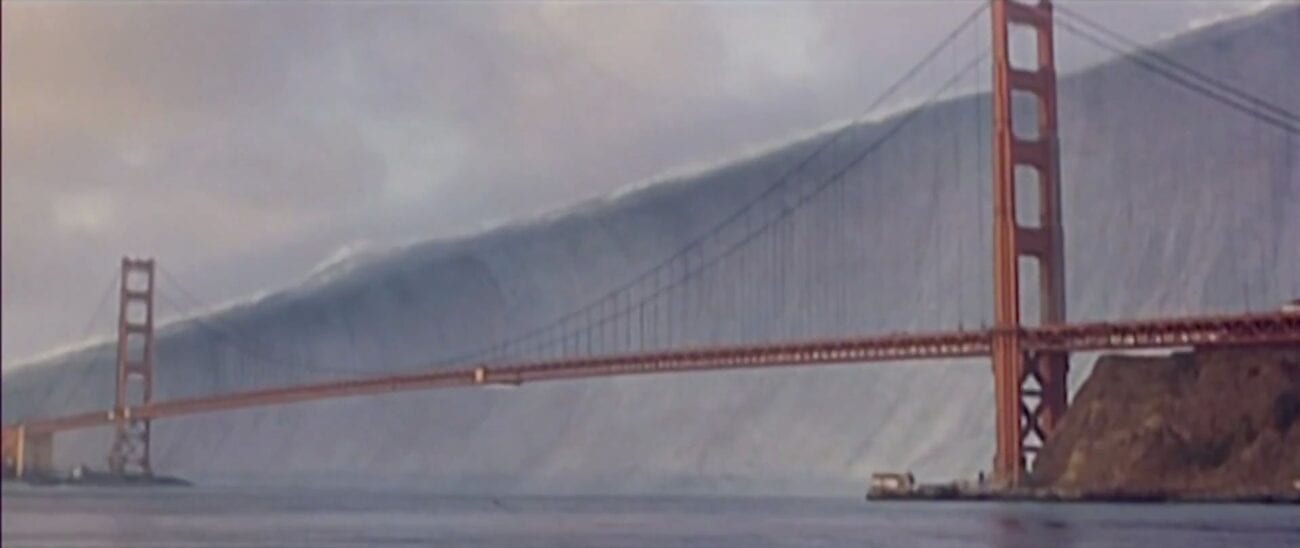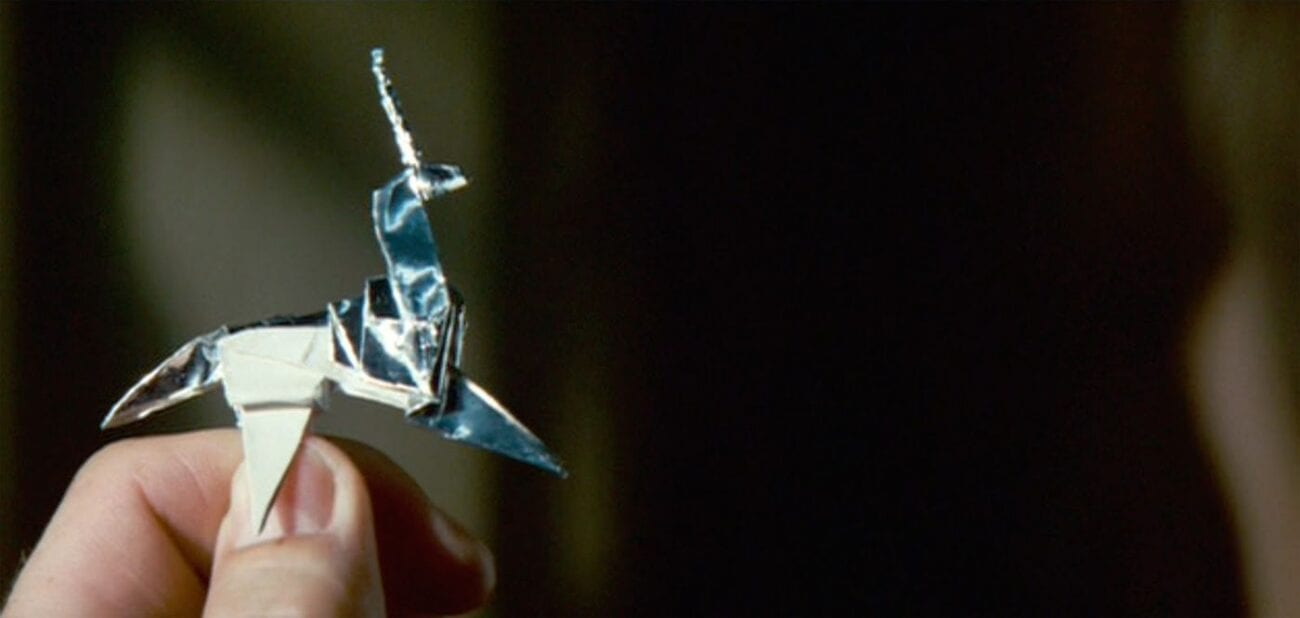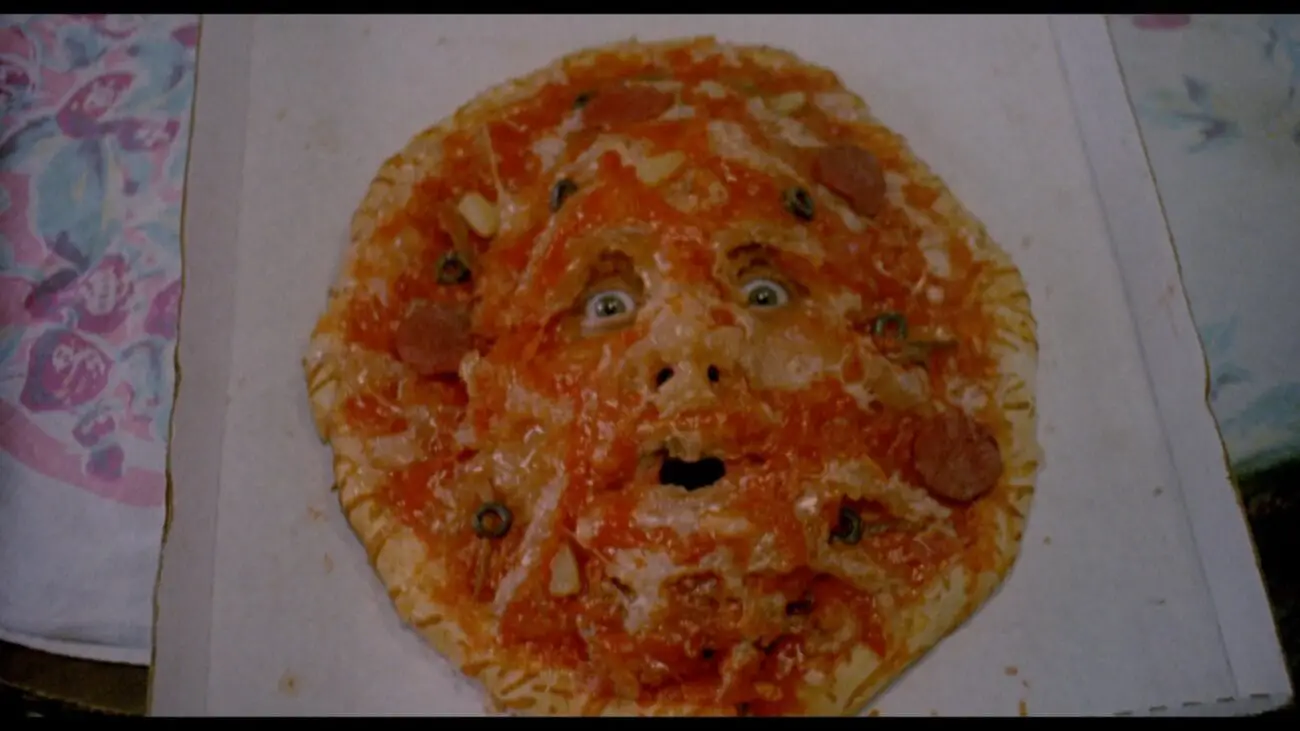For years now, people have been talking about the decline and eventual end of physical media. As more and more streaming services launch and saturate an already oversaturated market, the need for physical media looks to be diminishing. Why would anyone want to have a physical copy of something when it is readily available at the push of a button? Ease and convenience certainly factor into why people might ditch those cumbersome discs, but there is more to physical media than streaming. In showcasing my love for VHS, DVD, Blu-ray, and 4K, I would like to offer my perspective on physical media and to show there is more to offer than just the film.
For a little bit of history with me, I have always been a movie geek. As a child of the ’80s, some of my first memories come from popping in tapes of Rocky IV and Robocop into my family’s top-loader VCR. The fondness for all things film continued through my teenage years as I discovered the DVD format and the possibilities that came within. After obtaining my first DVD player, I distinctly recall the first films that graced my movie library: Bringing Out the Dead and Bowfinger.
As I have gotten older, I have found myself in love with film, but more so, in love with the behind-the-scenes aspects. Growing up, as I could not afford Laserdisc, I would hear about famous deleted scenes like the “Spider Pit” sequence from King Kong, the pie fight in Dr. Strangelove, the Jitterbug number from The Wizard of Oz, or the tidal wave in The Abyss. Knowing that there was more than what made it onto screen fascinated me just as much as the product presented. As DVD came around, I was finally able to access the additional content beyond the feature film. Not all deleted scenes were winners, and most, rightfully, got the chop—though that started the itch with my love of bonus features.

The advent of technology for home video exploded after we crossed the millennium, with film companies beginning to cater to the film enthusiast. Instead of a movie with trailers and an EPK puff-piece, companies such as Fox and New Line took DVD to a new level. Fox offered a premium series entitled the Five Star Collection for big-budget films like The Abyss, Speed, and Independence Day. Under the Five Star banner, the supplements included large-scale documentaries, seamless branching options, and 3D motion menus. Not to be outdone, New Line Cinema would launch two different video series: the Platinum Series and Infinifilm. Under Platinum, New Line would include commentaries, deleted scenes, and making-of documentaries. As an offshoot to Platinum, Infinifilm followed what Platinum had to offer, adding more in-depth features regarding the title you were watching. Infinifilm was a great idea but was overly-ambitious for the time.
And the love for physical media was not relegated to the disc. The early 2000s was equivalent to the Wild West when it came to packaging the disc(s). Brian De Palma’s Scarface had an anniversary release encased in a faux-alligator that included the original 1932 Scarface plus a money clip and reproduction cards.
The first two Evil Dead films had a special edition released, with each film housed in the Necronomicon. Time Life released the entire The Real Ghostbusters! TV show in a firehouse reproduction case. Then there was Ridley Scott’s release of Blade Runner that came in an individually numbered briefcase. Along with five(!) versions of the film, you get production documents, a Spinner die-case, and a replica of Gaff’s origami unicorn.
With all this zeal towards the home video market, and technology only getting better, things looked up for us who appreciated a well-put-together home video package. Then, something happened.

That something was the High-Definition Disc War between HD-DVD and Blu-ray. In the mid-2000s, high-definition became more commonplace. As had occurred in the late 1970s and early 1980s, with VHS and Betamax battling it out, the generation of home entertainment became a battlefield. After a long, protracted war, Blu-ray won out, and the next evolution of physical media began.
With Blu-ray taking over the physical media market, the love and care that we collectors were used to took a noticeable dip in quality. As the years went on, what was once an exciting format, became stale and rote. Yes, we still got releases for new and old films, but it felt like it came off an assembly line instead of a package made with love and care. That technology and looking up I had mentioned earlier? It did not seem to find its way to Blu-ray. 3D menus? Just standard screens with menu options. Bonus features? Yeah, there were some, but they didn’t feel special. Maybe some deleted scenes and a talking head documentary, but it felt lackluster. It ringed hollow. And the packaging? Just plastic cases, usually with garish Photoshop work on the cover. It left one depressed because it was sad to see such a bright corner of the film industry dim so darkly.
As the 2010s came to a close, though, boutique labels began making noise and catering to those who yearn for the physical media of yesteryear.
Labels such as Arrow Video, Shout! Factory, Blue Underground and MVD saw that there were consumers out there—pining for someone to step in and provide a physical media service. From big-budget films to obscure sexploitation and the complete Al Adamson collection(!), these labels understand the consumer and bring a touch of class back to a medium that big entertainment companies left in the dust.
And it’s not just digging up relics of the past, polishing them up, and releasing them to make a quick buck. Films that you would not expect to get a lavish release are sometimes the ones that get the most love. For instance, horror fans should be familiar with the ’80s horror franchise, House. It’s charming, entertaining, and forgettable. Even with that distinction, the series spawned three sequels with wildly varied results. Instead of releasing the series bare-bones with nothing to offer, Arrow Video gave all four films an HD transfer, loaded the discs with documentaries, commentaries, and regarding House III: The Horror Show, two different versions of the film. That is a ton of work and love for, arguably, a film series that didn’t deserve such treatment. Add on to this boxset a 60-page book, and you have to stand back in awe with what Arrow Video did for the House franchise.
Now, I’m not going to say that the House franchise didn’t deserve a special edition, but in the annals of horror film history, no one would consider this franchise top-tier. And that is my point. Sure, we expect the Friday the 13th and Halloween franchises to come loaded with goodies. It’s more impressive when a film you don’t expect gets the same five-star treatment that a prestige film series would get. As a collector, it feels more rewarding viewing a lesser-known film—packed to the gills with supplements because it shows that the labels gave as much love to the movie as the person watching it.
There are multiple content creators who breakdown the play-by-play on the A/V front—this isn’t something that interests me. I do not have the latest 4K television or world-class home theater system. Other people out there would do a much better job at the technical restorations of a disc. That is not what I want to spend my time detailing. Instead, what I would like to do is a thorough look-through of a physical media release. Film is art, and the physical media releases are an extension of the creative teams’ brushstrokes.

So, why do I still collect physical media? It allows me the freedom to enjoy others’ creations when I want to. No longer abiding by streaming platforms offering certain movies for limited times. No, the discs that house the art I want to watch are there for me at a moment’s notice. Going back to the House franchise, if the mood strikes and I have a hankering for House IV: The Repossession, is that available to me right now? What if I had to know director Lewis Abernathy’s thoughts on the talking pizza scene? I don’t think I will find anything to satiate my thirst for knowledge via streaming.
And that is the point I would like to make. Streaming has its advantages, yes, but for die-hard film fans and collectors, physical media will always come first. It’s not just about the film, though that comes first and foremost. I want to understand all aspects of the film and show my appreciation for the labels that supply those bonus features.
There was an old saying when DVD started to gain traction, referring to the discs as film school-in-a-box. It meant that with the commentaries, behind-the-scenes documentaries, and additional supplements, one could find themselves understanding the basics of filmmaking techniques. During the rise in Blu-ray, some of that luster wore off in favor of assembly-line products. Thankfully, labels such as Arrow, Vestron, Kino Lorber, and others have rescued this idea—identifying that there is still a market for physical media. These labels show they are fans as well—putting together illustrious packages that one would never have envisioned just a few years ago. I love all aspects of film, and boutique labels know others like me appreciate the work they put in. It’s a win-win on both sides, and I can’t imagine giving up physical media anytime soon.





I collect, too, but wonder what happens if manufacturers stop making players due to lack of popular support.
We’ll have to cross that bridge if we get to it. I look at it like records, they’re still making them to this day—they may not be as mainstream, but there is a market out there. I believe we will have a physical media market for a long time.
I am the same. When I buy I movie, I have the freedom to watch it any time and under any circumstance. I don’t have to be concerned about Megabits per second streaming rates or dues and subscriptions. I feel a true sense of ownership. I can kick back and look at my ever growing collection and admire them as a whole. You can’t do or have that with a streaming service. Some folks attempted to digitize their collection or download MP4s, etc. What if your hard drive crashes? There goes your digital files, etc.
There’s also all the extra features. You don’t tend to get those on streaming services or digital downloads.
Although I have quite a number of special releases, I am not the biggest “slip cover” fanatic. I am more interested in the best possible video and audio capability. I have double dipped on certain movies several times, when I know the next release will contain a better transfer.
“I do not have the latest 4K television or world-class home theater system.” <- I would strongly suggest you begin that investment. I have several 4K horror releases and they are mighty! Lucio Fulci's Zombie in 4K is a thing of beauty. Seeing Suspiria in Synapse's 4K transfer is like watching the film the way Dario Argento intended. I have seen the Shining on every format that has existed. The 4K version BLEW ME AWAY!!! to date, it might be the finest 4K transfer to date (in my opinion.)
I will say, I have begun to buy 4K discs, as I feel I will be upgrading soon. At the same time, I enjoy the filmmaking aspect just as much—sometimes even more than the film. So, having a world-class home theater system is not at the forefront of physical media for me.
On double-dips, I have been known to throw cash out there for the same title on more than one occasion. Usually, this is because I am upgrading from a bare-bones disc to a loaded disc. This hasn’t happened too often, but sometimes there is a packed disc full of features that I must have!
For digital, I understand why streaming and MP4s are an option and utilized. It is convenient and not having space taken up by multitudes of discs. It’s a yin and yang, though. I like the whole package, not just the film/show. I’m willing to trade space, versus my enjoyment of the film/show plus the bonus materials.
Personally I hate 4K. (many people say it has what’s referred to as the “Soap Opera” effect) I had a 4K TV and returned it. I just don’t like the way it looks. It looks like….TOO real. I prefer 1080p. I’ve got a 50 inch 1080p TV. 1080p downloads look beautiful, IMO. I also bought a backup 43 inch 1080p TV that’s still in the box. (you can no longer buy new, large 1080p TVs larger than 43 inches, and they’re getting harder to find). I also have new a 32 inch 720p TV. My reason for the 720p & 1080p backups is back that I have several older PCs (2008 dual core, 2012 i3, and 2015 i7 that I use for retro video game emulators. (I also have an 8th generation i7 I bought last year) I worry that 10-20 years from now when Windows 20 (or whatever) is released, I won’t be able to play my vintage games on that OS. I have about 400-500 DVDs & also have 6,000+ digital download movies. I started downloading movies back in 2008, when 320p-480p was standard. 320P looks fine on a 15 inch laptop screen, but horrible on a 50+ inch HD or 1080p TV. (480p is not much better) In around 2015 I started upgrading my collection to 720p, and a few years ago I started upgrading to 1080p. (I’ve got several 1,000 movies in 1080p, and a few 1,000 in 720p) I just like to own a physical copy of the movies I like, so I can watch them whenever I want to. It’s sad that eventually DVDs & BluRay will go the way of 8-track tapes, and eventually so to will digital downloads. (I also bought 4 backup, region-free DVD players for $50 each) In that respect, technology is kind of going backwards. If we live in an all digital age, yet you can NOT watch a movie you want to watch, whenever you want to watch it, I’m sorry but I see that as technology digressing. Also, many of the more obscure movies will be lost to time. (which is inexcusable in an age were digital storage space is dirt cheap)
You have a great set-up from the sound of it. I’m more about the idea of having a copy ready for whenever the mood strikes. On top of that, I adore bonus features. So, having a copy and (hopefully) coming with a handful of goodies on the disc is all I need.
Why would anyone want to have a physical copy of something when it is readily available at the push of a button?
But they’re not!!
Try finding even the best known classic blockbusters like Jaws, Alien, Star Wars, Superman, Star Trek, Psycho, Night of the living dead trilogy, E.T. Back to the future, The Jungle Book, etc on Netflix, Amazon Prime, Disney Plus. Good luck because they’re not there. The new stuff is mostly uploaded as that’s what makes money from the masses. Then even that gets removed once the lapse has gone.
The same reason CDs, tapes, records and other music formats still exist – Spotify doesn’t have everything. Nowhere near. In fact there’s more than 100 albums in my collection which aren’t even on Spotify and dozens are also missing from YouTube and the ones that aren’t are uploaded in very poor quality.
If it’s on Netflix, I’ll simply press play, but if it isn’t I’ll go to the shelf and slip it into the player. Both are great to have, but these reasons that I state above are the reason that physcial media is ot going anywhere, not in the near future anyway.
I agree with this. For the blockbusters, they will find their way to a streaming service. Then, you get into the issue of which streaming service that film has gone to. If you’re not paying for that service, you need to add that to your monthly expenditures. I can see the major films being phased out to some degree of physical media and towards streaming, but there will always be that niche area of people who would rather own the disc and have that content available whenever the mood strikes.
Well said, I totally agree. Physical media is not dead!
Thanks for checking it out! I’m not against streaming, either—I think both can exist for different reasons. There’s something special about a well-put-together physical media package, though.